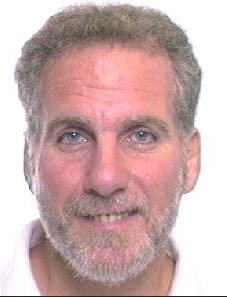Other Track AgendasOrgan-on-a-Chip and Body-on-a-Chip: In Vitro Systems Mimicking In Vivo Functions | Organs-on-Chips and 3D-Cultures: Technologies and Approaches |

Thursday, 7 July 201608:00 | Conference Registration, Materials Pick-Up and Continental Breakfast in the Exhibit Hall | |
Session Title: Opening Plenary Session |
| | 09:00 |  | Keynote Presentation Organ-on-a-Chip Technologies: Advances and Challenges
Martin Yarmush, Founding Director of the Center for Engineering in Medicine, Massachusetts General Hospital and Harvard Medical School, United States of America
|
| 09:30 |  | Keynote Presentation Move Over, Mice -- How the Fusion of Systems Biology with Organs on Chips May Humanize Drug Development
Linda Griffith, Professor, Massachusetts Institute of Technology (MIT), United States of America
“Mice are not little people” – a refrain becoming louder as the strengths and weaknesses of rodent models of human physiology and disease become more apparent. At the same time, three emerging approaches are headed toward integration: powerful systems biology analysis of intra- and inter-cellular signaling networks in patient samples; 3D tissue engineered models of human organ systems, often made from stem cells; and microfluidic devices that enable living systems to be sustained and used for models like cancer metastasis. This talk will highlight the integration of these rapidly moving fields to understand difficult clinical problems, and will especially highlight intellectual and technical challenges in transitioning “organs on chips” platforms from academic publications into practical use. |
| 10:00 |  | Keynote Presentation Creating Vascularized Tissue Constructs in Microfluidic Assays
Roger Kamm, Cecil and Ida Green Distinguished Professor of Biological and Mechanical Engineering, Massachusetts Institute of Technology (MIT), United States of America
Vascularization is critical to most tissues, yet developing a perfusable microvascular network within an on-chip tissue construct has proved challenging. Several approaches have been developed in recent years including the casting of networks within a hydrogel matrix that can subsequently be lined with vascular cells, and the growth of networks from cells seeded either on the surface of a hydrogel by angiogenesis, or from cells suspended in gel by a process akin to vasculogenesis. Our previous work has followed the second path in producing networks within microfluidic platforms that can be perfused within several days of seeding. These networks can be grown in various matrices either in co-culture with other cell types such as fibroblasts, myoblasts or osteoblasts, or in isolation. To date, the best results have been obtained by co-culture with normal lung fibroblasts in separate gel regions, using a fibrin-based extracellular matrix. Recently, these systems have been scaled up to mm-sized regions and the fibroblasts are co-seeded with the endothelial cells, leading to vascularized and perfusable networks that are perfusable for three weeks with potential applications for in vitro organ-on-chip systems. |
| 10:30 | Coffee Break and Networking in the Exhibit Hall | 11:15 |  | Keynote Presentation Organs-On-Chips for Advancing Drug Development and Personal Health
Geraldine A Hamilton, President/Chief Scientific Officer, Emulate Inc, United States of America
This talk discusses emulating living human biology to understand how different diseases, medicines, chemicals and foods affect human health. These systems are being used to advance product innovation, design and safety across a range of applications - including drug development, agriculture, cosmetics, chemical-based products and personalized health. |
| 11:45 |  | Keynote Presentation Using Human “Body-on-a-Chip” Devices to Aid Drug Development
Michael Shuler, Samuel B. Eckert Professor of Engineering, Cornell University, President Hesperos, Inc., United States of America
Effective human surrogates constructed from a combination of human tissue engineered constructs, microfabricated devices, and PBPK (physiologically based pharmacokinetic) models offer a potential alternative or supplement to animal studies to make better decisions on which drug candidates to move into clinical trials. These systems have been called microphysiological systems. We have constructed “pumpless” systems that provide a low cost, relatively simple-to-use platform to evaluate potential drugs for human response. In addition to measuring viability and metabolic responses, we can measure functional outputs such as electrical activity and force generation (in collaboration with J. Hickman, University of Central Florida). We will focus our discussion on development of key organ modules and their integration into a model of the whole body. |
| 12:15 |  | Keynote Presentation Microengineered Systems for Recapitulating Intestinal Function
Nancy Allbritton, Frank and Julie Jungers Dean of the College of Engineering and Professor of Bioengineering, University of Washington in Seattle, United States of America
Technical advances are making it possible to create tissue microenvironments on platforms that are compatible with high-content screening strategies. We have developed a microfabricated device to enable culture of organized cellular structures possessing much of the complexity and function of intact intestinal tissue. Single stem cells or crypts isolated from primary mouse intestine grow and persist indefinitely as organotypic structures containing all of the expected lineages of the intestinal epithelium. Our microengineered arrays and fluidic devices allow prolonged culture and experimental manipulation of these intestine-on-chip systems. Millimeter-scale primary intestinal epithelium can be formed closely mimicking the polarized 3D in vivo microarchitecture of primary tissue. These systems can also be interrogated by a variety of techniques including fluorescence, immunohistochemistry and genetic analyses. The bioanalytical platforms are envisioned as next generation systems for high-throughput assays of drug- and toxin-interactions with the intestinal epithelia. |
| 12:45 | Networking Lunch, Discussions with Exhibitors and View Posters | |
Session Title: Organs-on-Chips for Drug Discovery, Toxicity Screening and Drug Development |
| | 14:00 | Organs on Chips for Drug development, Toxicology, and Systems Biology: A Distributed yet Interconnected Modular Approach
John Wikswo, Gordon A. Cain University Professor, A.B. Learned Professor of Living State Physics; Founding Director, Vanderbilt Institute for Integrative Biosystems, Vanderbilt University, United States of America
Organs-on-chips are undergoing rapid development to better recapitulate in vitro the function of human organs in vivo. Their application to a variety of fields suggests the need to create large numbers of different organs and operate them either independently or interconnected, or both. This places economic and topological constraints on the physical hardware systems that keep these organs alive, monitors their performance, and controls their interaction. A promising approach is to utilize different low-cost modules, made from a simple set of common components, to provide these functions in a plug-and-play manner, thereby spanning the range of applications of organs on chips pursued from organizations as small as a single-investigator biology lab to government toxicology screening programs to pharmaceutical groups evaluating the efficacy and toxicity of drugs and drug cocktails. | 14:30 |  | Keynote Presentation LiverChip – Development of Organ-on-a-chip Liver Disease Models
David Hughes, Chief Technical Officer, CN Bio Innovations Ltd., United Kingdom
Organ-on-a-chip (OOC) technologies offer the promise of in vitro models which more closely recapitulate the in vivo. Current OOCs typically have low to medium throughput, offer high information content and are relatively complex when compared to 2D cultures, making it more likely that these technologies could replace certain animal tests than supplant high throughput screens. An initial wave of activity focused on drug metabolism and safety applications of OOCs however an animal-centric regulatory framework, particularly for safety testing, and a disconnect between the cost and benefit that OOCs can provide in ADME/Tox make this a challenging area in which to achieve widespread adoption. Disease modelling provides a more compelling opportunity for OOC technologies: a number of diseases are poorly recapitulated in animal models so OOCs offering improved translational relevance would be highly desirable. A small airway-on-a-chip to model COPD and asthma, and a hepatitis B infected liver-on-a-chip model are two examples of disease OOCs already being exploited by pharmaceutical companies in the development of new drugs. This presentation will describe the development of models for viral hepatitis, malaria and non-alcoholic fatty liver disease (NAFLD) building on a microfluidic OOC platform, LiverChip®. Liver disease represents a significant and growing global health burden, being the only one of the top five causes of death to have increased in the UK in the last decade. The liver is a complex organ, comprised of multiple cell types undertaking hundreds of essential functions and is a major site of drug metabolism and toxicity. The liver is also a unique immunological organ in which liver resident macrophage (Kupffer) cells and lymphocytes play critical roles in first line immune defence against invading pathogens, modulation of liver injury and recruitment of circulating lymphocytes. |
| 15:00 |  | Keynote Presentation 96 Kidney Tubules On-a-Chip For Real-Time Toxicity Testing
Paul Vulto, Managing Director, MIMETAS, Netherlands
Drug toxicity remains a major issue in drug discovery and stresses the need for better predictive models. Here, we describe the development of a perfused renal proximal tubule cell (RPTC) model in Mimetas’ OrganoPlates™to predict kidney toxicity. The OrganoPlate™ is a microfluidic platform, which enables high-throughput culture of boundary tissues in miniaturized organ models. In OrganoPlates™, extracellular matrix (ECM) gels can be freely patterned in microchambers through the use of PhaseGuide™ technology. We demonstrate 96 perfused RPTCs on one OrganoPlate on which toxicity effects can be monitored in real-time. The model capitulates crucial aspects of the proximal tubule, including leak-tightness, apical-basal polarization and expression of a range of crucial transporters.
|
| 15:30 | The Patent Landscape of Organs-On-A-Chip
Deborah Sterling, Director, Sterne, Kessler, Goldstein & Fox PLLC, United States of America
Organs-on-a-chip have present-day real-world uses such as for the preclinical testing of drugs. Thousands of patents have been filed on various aspects of organs-on-a-chip, including their manufacture. A company seeking to make, use or sell an organ-on-a-chip must consider the patent landscape. This talk will focus on ways to protect organs-on-a-chip innovation, patent filings directed to organs-on-a-chip technology, certain exceptions to patent infringement, as well as the possibility of future litigation. | 16:00 |  | Keynote Presentation Utilizing Private-Public Partnerships for Development and Implementation of Microphysiological Systems
Kristin Fabre, Microphysiological Systems Lead, Drug Safety & Metabolism, AstraZeneca, United States of America
Tissue Chips (or Microphysiological Systems; MPS) are bioengineered tools being developed for predicting efficacy and toxicity of candidate compounds. MPS development has progressed to a point where engagement of pharmaceutical and biotech industries will significantly help the continued development and implementation of these technologies. This session will address the potential for commercializing tissue chip technology, and how industry can partner with public funding bodies to advance the field of this technology.
|
| 16:30 | Coffee Break and Networking | 17:00 | Panel Discussion Focusing on Challenges and Opportunities in the Organs-on-Chip Space Moderated by Dr. David Hughes, CN Bio Innovations Ltd.
| 18:00 | Networking Cocktail Reception for All Delegates, Speakers, Sponsors and Exhibitors: Enjoy Beer, Wine, Appetizers and a View of the Charles River and Boston from the 15th Floor Conference Center | 19:30 | Close of Day 1 of the Conference |
Friday, 8 July 201607:30 | Morning Coffee, Breakfast Pastries, and Networking | |
Session Title: Organs-on-Chips Recapitulating In Vitro Various In Vivo Processes -- I |
| | 08:00 | Human Physiome-on-a-Chip: A Systems Pharmacology Approach
Murat Cirit, Director at Translational Center of Tissue Chip Technologies, Massachusetts Institute of Technology (MIT), United States of America
A systems pharmacology perspective in the human body on a chip field problem incorporates more mechanistic detail than traditional pharmacokinetic (PK) and pharmacokinetic/pharmacodynamic (PK/PD) models yet within broadly comprehensive scope. These systems pharmacology approaches offer new insight into design of experiments, data interpretation and organ-specific responses, which can be translated to in vivo responses, such as drug efficacy and toxicity. For example, ADME, pharmacodynamic and toxicodynamic properties of a drug can be experimentally investigated in multi-MPS platforms under various physiological conditions. Complex experimental results can be interpreted using mechanistic pharmacokinetic & pharmacodynamics (PK/PD) models allowing us to predict clinical outcomes more accurately than existing preclinical animal models. | 08:30 | Medical Device-on-a-Chip: The Future of Performance and Safety Testing?
K. Scott Phillips, Biofilms Research Group Leader, US FDA Center for Devices and Radiological Health, United States of America
Organ-on-a-chip models combine lab-on-a-chip technology with tissue culture techniques to more accurately mimic human physiology. In the field of pharmaceuticals, organ-on-a-chip in vitro models have seen rapid development. Although medical devices and pharmaceuticals have a number of similar testing needs, there has been no recognition of the potential for lab-on-a-chip models to transform performance and/or safety testing of medical devices. In this talk, we will describe the potential advantages of medical-device-on-a-chip (MDOC) technology to help increase the speed of performance and safety testing for medical devices, while decreasing the overall burden required to bring new technologies to market. We will discuss efforts in our laboratory to miniaturize current test methods, and solutions that were developed to overcome unique challenges associated with combining macroscale device materials and microscale fluidics. | 09:00 | Microfluidic Spatiotemporal Control Technology for Organ-on-a-Chip
Hiroshi Kimura, Professor, Micro/Nano Technology Center, Tokai University, Japan
Conventional cell-based assays in life science and medical application can be difficult to maintain cell functionally. Microfluidics is an emerging technology with potential to provide integrated environments for maintenance, control, and monitoring of surround of cells. Our research group works in mainly in fundamental technologies of microfluidic devices and systems, and their applications to biological sciences including and Organ-on-a-chip and Tissue-on-a-chip. In this presentation, we introduce integrated microfluidic platforms, which allow precisely control of the cell culture environment on Organ-on-a-chips. The microfluidic structure in the devices can mimic a physiological environment in vitro. Moreover, functional components, such as membranes, sensors, valves and pumps, can be integrated into the devices by microfabrication. We have applied the devices to organ cell assay, embryo culture, and tissue culture. Performance of the devices was examined through cell and tissue culture. These devices may have applications in drug screening and toxicity testing. | 09:30 | 3D Sprouting Lymph-angiogenesis Platform
Noo Li Jeon, Professor, Seoul National University, Korea South
Formation of new lymphatic vessels, lymphangiogenesis, is central in diverse biological processes during development, inflammation and tumor metastasis. Currently there are no reliable models to recapitulate how sprouting lymphangiogenesis is initiated and coordinated. This presentation will describe a microfluidic platform optimized for reconstitution of lymphangiogenesis. With control over chemical and physical factors such as biochemical cues, interstitial flow (IF), and cell-cell interactions (endothelial-fibroblast), we found that coordinated effects of multiple factors are necessary for robust lymphatic sprouting in 3D extracellular matrix. We observed that IF serves as an important cue that defines lymphangiogenic response and phenotypes of primary lymphatic endothelial cells. When combined with pro-lymphangiogenic factors, IF significantly increase and guide initiation and outgrowth of lymphatic sprouts toward upstream of the flow while suppressing downstream-directed sprouting. The lymphatic sprouts expressed molecular signatures and cellular phenotypes that closely approximate sprouting lymphatic neovessels in vivo, and reflected the modulatory effects of pro- and anti-lymphangiogenic stimuli. Mechanical cue in the form of IF have profound effect on lymphangiogenic sprouting and thus the microfluidic platform provides a useful in-vitro model for investigation of lymphangiogenesis for organ-on-a-chip applications. | 10:00 |  | Keynote Presentation Circulatory System and Integrated Muscle Tissue for Drug and Toxicity Testing
George Truskey, R. Eugene and Susie E. Goodson Professor of Biomedical Engineering, Duke University, United States of America
We have developed functional human tissue-engineered blood vessels (TEBVs) and skeletal muscle myobundles that model normal structure and function and represent disease states. We have fabricated specialized perfusion systems for the human TEBVs and skeletal muscle myobundles that enable in situ measurements of vasoactivity, dimensions, leukocyte adhesion, calcium transients, contractile force and oxygen uptake. Offline measurements include glucose uptake, nitric oxide production, gene and protein expression, and metabolite levels. These microphysiological systems (MPS) have been prepared using primary human cells, induced pluripotent stem cells (iPSCs) from human fibroblasts, and reprogrammed endothelial cells. Disease states that we examined including inflammation, Duchenne Muscular Dystrophy (DMD), metabolic storage disease, and Hutchison-Gilford Progeria Syndrome (HGPS). Since iPSC-derived cells exhibit reduced function relative to primary cells, addition of small molecules that activate specific transcription factors controlling differentiation improves MPS function. We have generated an immortalized human primary DMD cell line to prepare functional myobundles. The bundles show some characteristics of a dystrophic muscle such as increased susceptibility to repeated eccentric contractions, evidence of myotube branching, and potential hypercontraction of myotubes. TEBVs prepared with cells from HGPS patients exhibit reduced numbers of smooth muscle cells, apoptosis and calcification, conditions found in vessels of adults with the disease. Treatment of TEBVs with cells derived from HGPS patients with rapamycin appears to improve TEBV function.
|
| 10:30 | Coffee Break and Networking in the Exhibit Hall | 11:00 | Bioreactors for Megakaryocyte Studies and Platelet Formation: Where Do We Stand?
Jonathan Thon, Assistant Professor, Brigham and Women's Hospital/Harvard Medical School, Co-Founder -- Platelet BioGenesis, United States of America
Platelets are responsible for clot formation and blood vessel repair and are produced by megakaryocytes in the bone marrow. Low platelet count is a significant consequence of transplant and surgery, for which platelets are a critical first-line therapy to prevent mortality due to uncontrolled bleeding. While cancers and their treatments have been shown affect normal platelet production affecting the pathogenesis of disease, the causes are largely unknown. The development of microfluidic platforms that accurately model microvascular niches and offer high-resolution live-cell visualization of biological phenomenon and precise control of individual environmental components are needed to elucidate the mechanism(s) regulating platelet production in vivo. Likewise, the production of lab-generated human platelets is necessary to meet present and future transfusion needs. We have shown that it is feasible to generate functional megakaryocytes from human embryonic, cord blood and induced pluripotent stem cell cultures. The most significant obstacle to ex vivo platelet production has been triggering megakaryocytes to produce platelets at yields necessary to make production of a platelet transfusion unit clinically and commercially feasible. Evidence suggests that key physiological characteristics of the bone marrow environment including extracellular matrix composition, bone marrow stiffness, endothelial cell contacts, and vascular shear stresses trigger platelet release. We recently developed a scalable microfluidic platelet bioreactor that recapitulates these major characteristics of human bone marrow. By exposing megakaryocytes to physiological shear stresses of blood we have improved the rate and extent of platelet production, and reduced the time to initiation of platelet release. Morphology, ultrastructure and function of our bioreactor platelets is consistent with blood platelets. We are separately adapting our platelet bioreactor to: (1) more accurately recapitulate b | 11:30 | Towards Organs-on-Chip Devices in Multiwell Format for Drug Testing, Mechanistic Studies, and Personalized Medicine
Martin Stelzle, Head of BioMEMS & Sensors Department, NMI at University of Tübingen, Germany
Organs-on-chip are envisioned to enable in vivo like answers in preclinical drug testing by establishing cell cultures mimicking the smallest functional units of an organ. We will report on our organs-on-chip technology based on combining microfluidics and dielectrophoresis (DEP) to assemble primary human cells and enabling the automated in vitro construction of micro-organs. As a unique feature of this organ-on-chip technology, the use of DEP selectively assembles only viable cells. Organ-specific 3D cell culture chambers are designed and validated by multiphysics simulations and realized by injection molding of cyclic olefin polymer (COP). Proprietary surface functionalization enables selective deposition of extracellular matrix proteins in a simple perfusion process. High resolution optical imaging of micro-organs along with typical staining technologies can be applied due to the exceptional optical properties of COP. In addition, perfundates and lysates may be collected for biochemical analysis. A particular focus is placed on the design of devices in multiwell plate format in combination with a dedicated periphery system in order to enable assembly and cultivation of multiple micro-organs per chip and integration of the system into existing workflows. In summary, this technology is applicable to the assembly and culture of diverse organ tissues involving complex arrangement of multiple cell types and extracellular matrix and enables continuous perfusion of these micro-organs. A large number of applications in drug testing, mechanistic studies, and in personalized medicine are envisioned to benefit from this technology. | 12:00 | Modeling and Simulation of Microfluidic Organ-on-Chip Devices
Matthew Hancock, Managing Engineer, Veryst Engineering, LLC, United States of America
Modeling and simulation are key components of the engineering development process, providing a rational, systematic method to engineer and optimize products and dramatically accelerate the development cycle over a pure intuition-driven, empirical testing approach. Modeling and simulation help to identify key parameters related to product performance (“what to try”) as well as insignificant parameters or conditions related to poor outcomes (“what not to try”). For microfluidic organ-on-chip devices, modeling and simulation can inform the design and integration of common components such as micropumps, manifolds, and channel networks. Modeling and simulation may also be used to estimate a range of processes occurring within the fluid bulk and near cells, including shear stresses, transport of nutrients and waste, chemical reactions, heat transfer, and surface tension & wetting effects. I will discuss how an array of modeling tools such as scaling arguments, analytical formulas, and finite element simulations may be leveraged to address these microfluidic organ-on-chip device development issues.
| 12:30 | Networking Lunch in the Exhibit Hall: Visit Exhibitors and Poster Viewing | |
Session Title: Organs-on-Chips Recapitulating In Vitro Various In Vivo Processes -- II |
| | 13:30 | Prostate-on-a-Chip
Nathalie Picollet-D’Hahan, Senior Project Manager, Commissariat à l’Energie Atomique et aux Energies Alternatives (CEA) Grenoble, France
| 14:00 |  | Keynote Presentation Lung-on-Chip Models for Drug Discovery Applications
Olivier Guenat, Head, Organs-on-Chip Technologies, ARTORG Center for Biomedical Engineering Research, University of Bern-Switzerland, Switzerland
Commercially available in vitro models of the lung poorly represent the complex architecture and the dynamic environment of the air-blood barrier. Here we present two lung-on-chip models that mimic a number of aspects found in this particular environment. The first lung-on-chip model reproduces the thin alveolar barrier and the cyclic movements induced by the respiration. Results obtained with lung epithelial and endothelial cells demonstrate that a physiological mechanical strain significantly affects the cells response. In addition to the capabilities of this in vitro model to mimic the in vivo response, this lung-on-chip model is designed to be robust and comprise an array of three wells in view to its further implementation as a drug discovery tool. A second model reproduces the lung microvasculature. It is made of endothelial and primary pericytes from patients that self-assemble in a microfluidic construct filled with fibrin gel in a tight, stable and perfusable microvessels network. The role of the pericytes revealed to be crucial to the stability and tightness of the microvessels. In addition, their presence enabled to restore one of the key functions of those capillaries: their vasoconstriction. Such organs-on-chip systems have the potential to be used to screen new molecules for their efficacy in a very near future. |
| 14:30 | 3D Cell-Printed Brain Cancer-on-a-Chip Recapitulates Pathophysiology in vitro
Hee-Gyeong Yi, Researcher, Pohang University of Science and Technology, Korea, Korea South
Establishment of in vitro glioblastoma model by recreating the heterogeneous microenvironment with spatial control of oxygen and cellular arrangement. | 15:00 | Immunotherapy on Chip: “Under the Microscope” Drug-Induced Modulation of the Immune Response
Luca Businaro, Scientist, Italian National Research Council, Italy
Adele De Ninno, Post-Doc, University of Rome "Tor Vergata", Italy
Reconstitution of the immune system through organ-on-chip (OOC) approach opens a new window to live observation of the immune response to insults with or without drug treatments, making OOC a cornerstone for dissecting complex biological phenomena and pre-clinical testing of drugs. | 15:30 | Coffee Break and Networking | 16:00 | Controlled Drug Release and Cell Response with a 3D Acoustofluidic Tumor Model
Ioannis Zervantonakis, Research Fellow in Cell Biology, Harvard Medical School, United States of America
We developed a novel acoustofluidic platform by integrating a physiologically relevant 3D microfluidic device and a FUS system with a closed-loop controller to study drug transport and assess the response of cancer cells to chemotherapy in real time using live cell microscopy. Our 3D platform enables the accurate control of the drug-release area in order to establish chemotherapeutic agent concentration gradients in a physiologically relevant environment. This acoustofluidic platform that can aid the discovery of new therapeutic protocols for non-invasive cancer treatments that target tumor cells regionally without damaging adjacent normal cells. | 16:30 | Towards the Growth of Blood Vessel Networks in Microfluidic Culture
Muhammad Ibrahim, Researcher, Institute of Biology, Leiden University, Netherlands
One of the major limitations in culturing complex tissues or organs is the lack of vascularization in the cultured tissue. Development of a functional capillary bed in 3D microfluidic culture could overcome this problem. Unlike static culture systems, microfluidic cultures allow the flow of medium to mimic blood flow in vivo, hence allowing the endothelial cells in culture to develop into functional blood vessels with lumina. In this presentation the importance of 3D cell culture and microfluidic technology for development of in vitro vascular network will be discussed. We are using zebrafish embryonic cells as a low-cost, high-throughput replacement for mammalian cell culture models, currently used for in vitro vasculogenesis and angiogenesis studies. Aggregates of embryonic blastocyst cells (embryoid bodies), containing differentiated endothelial cells, were embedded in a 3D hydrogel and plated into a microfluidic channel. The channel was then connected to a medium reservoir and a microfluidic pump to start the flow of medium through the channel. The results showed significant effects of microfluidic flow on the morphology of blood vessel-like structures formed by the differentiated endothelial cells. | 17:00 | Increased Stiffness of Lung Fibroblast Cell Aggregates in Idiopathic Pulmonary Fibrosis
Fernando Rafael Jativa, Research Scientist, The University of Melbourne, Australia
The present study show 3D fibroblast spheroids are an effective tool to study idiopathic pulmonary fibrosis (IPF). Spheroid stiffness was assessed by microfluidics and micropipette aspiration, revealing an increase of 64% in stiffness when using primary cells from IPF patients to make spheroids, whereas stiffness of individual cells was not altered by IPF. | 17:30 | Close of Day 2 of the Conference |
|

 Add to Calendar ▼2016-07-07 00:00:002016-07-08 00:00:00Europe/LondonOrgan-on-a-Chip and Body-on-a-Chip: In Vitro Systems Mimicking In Vivo FunctionsSELECTBIOenquiries@selectbiosciences.com
Add to Calendar ▼2016-07-07 00:00:002016-07-08 00:00:00Europe/LondonOrgan-on-a-Chip and Body-on-a-Chip: In Vitro Systems Mimicking In Vivo FunctionsSELECTBIOenquiries@selectbiosciences.com